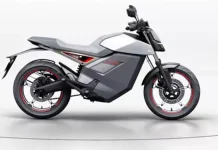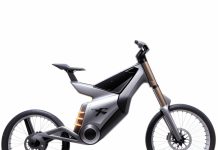Tesla
In recent years, the surge of electric vehicles (EVs) has reshaped the automotive industry, signalling a significant shift away from traditional combustion engines. As environmental concerns take centre stage and technological advancements in EVs continue, more sectors are pivoting towards sustainable transportation options.
Notably, the transition is not just among individual consumers but also within large-scale fleet operations across the United States. A recent revelation in this automotive evolution comes from S&P Global Mobility’s data, highlighting Tesla’s emerging dominance in the U.S. fleet market. This development prompts a closer examination of the market dynamics, the competitive landscape, and the factors contributing to various purchasing preferences in the fleet domain.
EV fleet
Several key points emerge from these developments:
- Tesla’s Dominance: Tesla continues to lead in the EV space, not just among everyday consumers but also among U.S. fleet purchasers, indicating the brand’s strong market position. The preference for Tesla vehicles, particularly the Model 3 and Model Y, among fleet buyers can be attributed to several factors, including the vehicles’ performance, range, and the company’s established charging infrastructure.
- Strategic Partnerships: The deal between Tesla and Hertz, involving a large order of Tesla vehicles, underscores the importance of strategic partnerships in expanding EV adoption in the fleet sector. By ensuring that a significant portion of its rental fleet is electric, Hertz is not only responding to increasing environmental awareness but also potentially influencing consumer taste, as renters experience driving a Tesla. The additional collaboration with Uber expands the visibility and accessibility of EVs in everyday life, potentially normalizing their use.
US fleet
- Competition and Market Dynamics: While Tesla leads, competition is growing. The Chevy Bolt’s popularity, especially among government fleets, suggests that certain features or deals (potentially around pricing or specific utility needs) make it preferable for public sector use. Meanwhile, Ford’s recent move to open orders for its electric F-150 Lightning Pro for fleets indicates that the market will likely become more competitive, with traditional automakers pushing harder into the EV space. The electric F-150, given the original model’s popularity, might significantly change fleet compositions once it starts being delivered.
Model 3
- Sporadic Nature of Fleet Sales: The buying cycles for fleet purchases, as indicated, do not follow a consistent pattern but are influenced by budget cycles, specific deals, and bulk purchasing agreements. The high sales in specific months for Tesla could be due to particular agreements or the end of fiscal periods when organizations might have more budget flexibility.
- Government’s Role in EV Adoption: The government sector’s preference for certain models, like the Chevy Bolt, over others could be driven by different factors than the private sector, such as budget constraints, procurement regulations, or policy goals related to domestic production. This divergence also suggests that EV manufacturers may need to tailor their approaches and offerings to fit the unique needs of public sector buyers.

Source: S&P Global Mobility new vehicle registrations to fleets, July 2022-July 2023
Rental Company
The landscape for electric vehicles in the fleet sector is evolving, with Tesla maintaining a strong position. However, the dynamics in this sector are influenced by various factors, from strategic partnerships and special deals to the specific needs of public and private sector buyers. As more traditional automakers continue to push into this space, it’s reasonable to expect the competition to intensify, potentially leading to a more diverse market in the coming years.
Conclusion
The trajectory of electric vehicle integration into fleet operations marks a pivotal chapter in the automotive industry’s story. As evidenced by recent trends, Tesla’s stronghold in the EV market extends beyond individual consumers, carving significant inroads into the fleet sector. However, the landscape is intricate, with purchasing decisions influenced by a myriad of factors, from the sporadic nature of fleet sales cycles to strategic corporate partnerships and specific public sector requirements.
The role of collaborations, such as those between Tesla, Hertz, and Uber, underlines a strategic push to amplify EV presence in everyday life, potentially swaying consumer preferences on a larger scale. Meanwhile, competition stiffens as traditional automakers like Ford and Chevrolet are vying for their share with models tailored for fleet usage, demonstrating that the market is ripe for innovation and expansion.
In the wake of these developments, the future of fleet operations will likely be characterized by a diverse mix of electric vehicles, reflecting broader environmental commitments, economic considerations, and the relentless march of technological progress. Amidst this competitive jostling, one thing is clear: the electrification of the automotive sphere is well underway, and the fleet sector’s embrace of this technology signals a paradigm shift with far-reaching implications for the environment, the economy, and societal norms surrounding transportation.





































